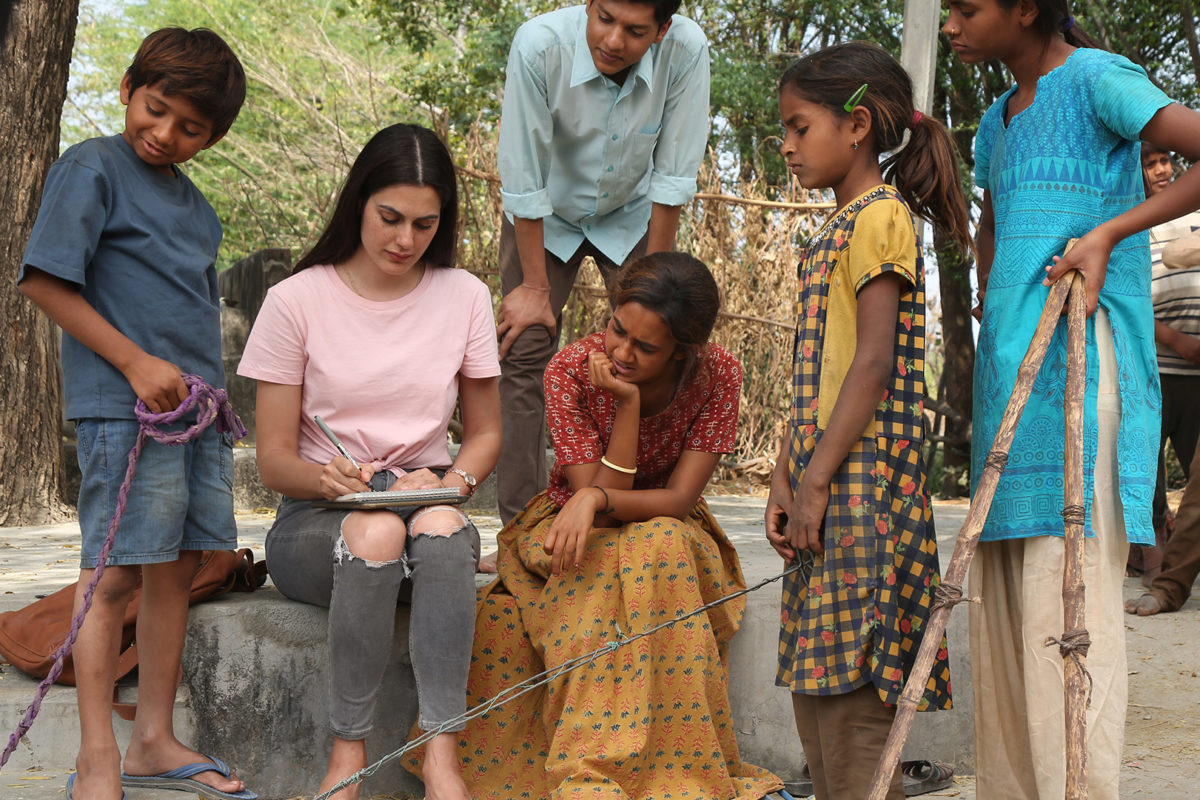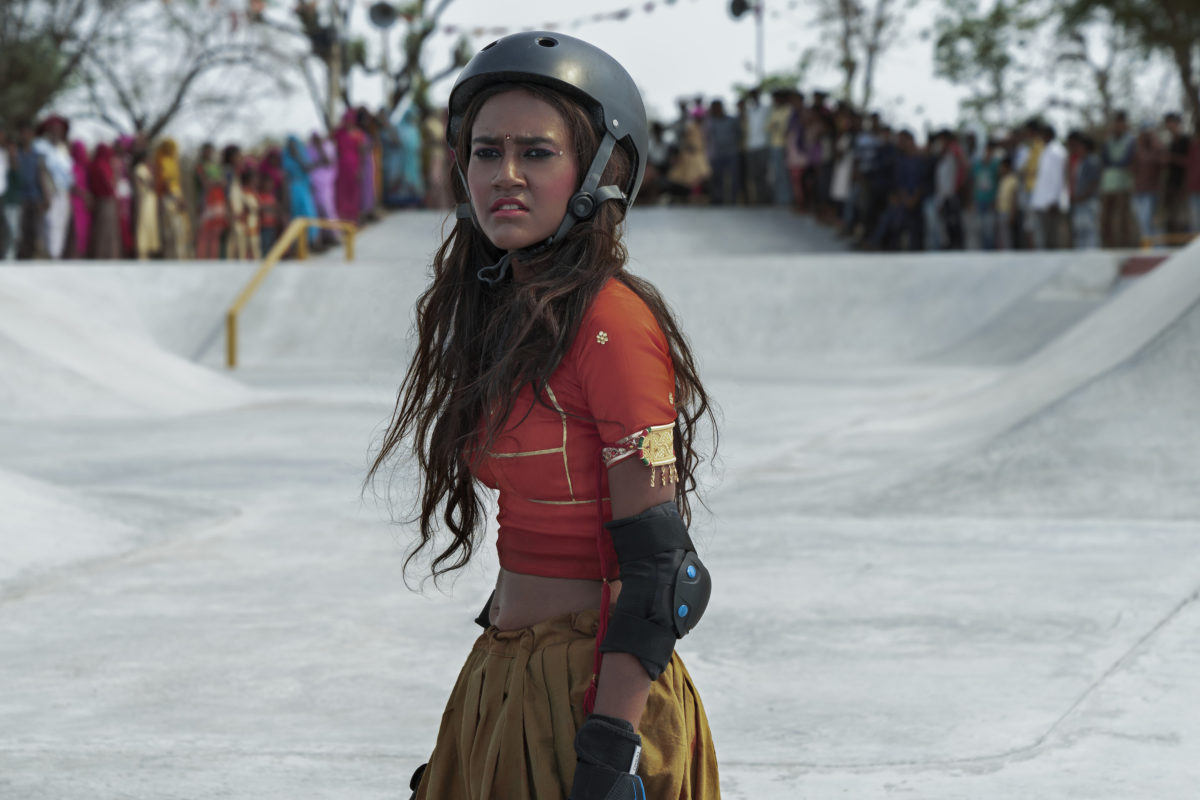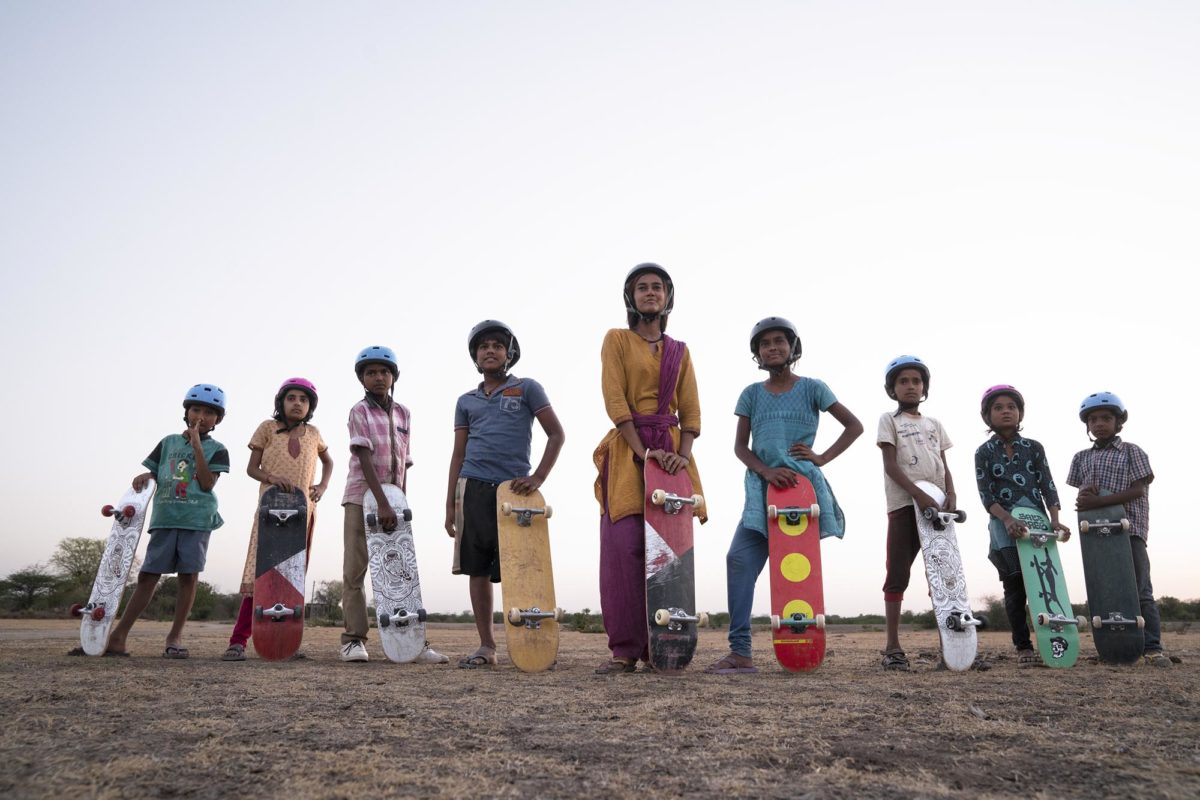
FAQ
Is Skater Girl based on a real life story ?
Skater Girl is not a biopic based on anyone’s life story nor is it a documentary. The filmmakers were inspired by the impact skateboarding was creating in communities across India and several skate movements across the globe like Skateistan in Afghanistan. All their research and their experiences and struggles of making an actual skatepark made it into the film. You can find out more about the park here: www.desertdolphinskatepark.com
Where did they discover the actress playing Prerna’s role in the film?
The filmmakers conducted workshops with hundreds of teenage girls across India to audition for Prerna. Sanjeev Maurya, the casting director of the film, sent Rachel Gupta’s tapes to the filmmakers. She got through the first round of selection and then went through a rigorous audition process and an intensive artist residency program before being offered the role of Prerna.
In which village was the film shot?
The film was shot in Khempur, a remote village in Mavli district, which is about 50kms away from Udaipur in Rajasthan.
How many days did it take for the kids to learn skateboarding?
None of the lead kids and supporting talent knew how to skate before filming. Coached by Kevin ‘Anish’ Christopher, they went through five months of intense skateboarding training to learn how to skate.
Was the skatepark built way before the film was shot or during the making of the film?
In 2017, the filmmakers decided to build the Desert Dolphin Skatepark for the film. 100 Ramps, a skatepark construction company along with Holystoked Collective in Bangalore led the skatepark construction work and assembled a local and international build crew. While the park was constructed in 45 days (8 weeks) in 2018, the actual movie was shot in 2019.
Was Prerna a skater before the film?
No, Rachel, who plays the character of Prerna, was not a skater before the film.
How many skateparks are there in Rajasthan?
Currently, the Desert Dolphin Skatepark is Rajasthan’s first and only skatepark and one of India’s largest.
Are the actors real-life skaters?
Apart from Jonathan Readwin, who plays the role of Erik in the film, none of the lead and supporting actors knew how to skate.
Is Rachel a local resident?
No. Rachel who plays the character of Prerna is not a local resident of Khempur; she in fact lives in Delhi, where she is pursuing her graduation and exploring her career in acting.
What does Jessica do?
Jessica is a London-bred advertising executive who came to visit her village in Rajasthan.
Why did Jessica come to this village?
She arrives in the village to learn more about her late father’s childhood.
What are the names of the volunteers seen in the film?
Darius C. Bharucha, Abhishek, Anish Christopher, Atita Verghese, Janthavy Norton, Jacob Wiese, Mikkjel Dolferus.
Who were the skaters seen in the championship scene?
There were several real-life skaters who participated in the championship scene—Mahin Ivan Tandon from Bangalore, Arnav Pathare from Mumbai, Shivam Balhara from Delhi, Shubham Surana from Pune, Deepa Yadav from Janwaar and Mini Johny, Vidya Das and Rahul Rafi from Kovalam, Kerala.
How many kids from the village were taken in the film?
There were about 35 local kids, who acted for the first time for this film. They even learnt how to skateboard with other cast members during the prep of this film. Four of the local skater went on to represent Rajasthan at the 2021 National Skateboarding Championship in Chandigarh.
Who made the skatepark? And how big is it in size?
Situated on a one acre campus, the 14,500 sqft skatepark is one of India’s largest and Rajasthan’s first skatepark. The idea to build an actual skatepark instead of a set was initiated by filmmakers Manjari Makijany, Vinati Makijany and Emmanuel Pappas. The skatepark was built with the help of a team of Indian and international volunteers put together by 100 Ramps and Holystoked Collective.
Was the character of Jessica based on a real-life person?
Jessica’s character was based on the struggles faced by Manjari and Vinati, writers of the film, while building Rajasthan’s first skatepark.
What happened to the skatepark after the film? Is training provided for free at the park?
After the shooting of the film wrapped, the skatepark was made open to all. It now serves as a free community skatepark, where children are taught and provided skateboards and safety gear at no cost thanks to skate brand supporters. Though most of them naturally picked it up, ongoing skate, art and educational workshops and activities are organized through The Living Grace Foundation. We also have volunteer programs that provide continued support for the children at the Skatepark.
How can I make a donation to the Skatepark and support the children who attend the workshops and facility?
For local Indian donations, please visit The Living Grace Foundation Trust Trust website to make a donation. International donors please email us at thelivinggracefoundation@gmail.com so we can direct you to the appropriate foreign non-profit organization.
Is the Desert Dolphin Skatepark and The Living Grace Foundation the same entity?
The Living Grace Foundation was formed upon the success of constructing Rajasthan’s first ever Skatepark built in a remote village in Rajasthan which now runs as a community skatepark impacting over 5,000 kids from surrounding villages. Upon seeing the impact the skatepark and skateboarding was having on the local community the filmmakers knew they had to ensure the change continued long after the fruition of the skatepark. And that’s how the germ of The Living Grace Foundation came into existence.
What type of non profit programs, activities and facilities does the Living Grace Foundation support?
TLGF believes that Art and Sports are powerful tools to educate and empower. The skatepark is where children are found in their most free, open and creative self. They’re not coax to turn up. The skatepark is a place they are at before school, after school, on a holiday, on a festival or during breaks from their time at the farms. The TLGF aims to introduce them to the power of peer learning and collective knowledge, and skateboarding has already laid a very strong foundation for this. Programs currently in place include volunteer and visiting coaches, art workshops, and screenings. The larger vision is to have a school that teaches through play and uses art as an integral part of learning all subjects.


